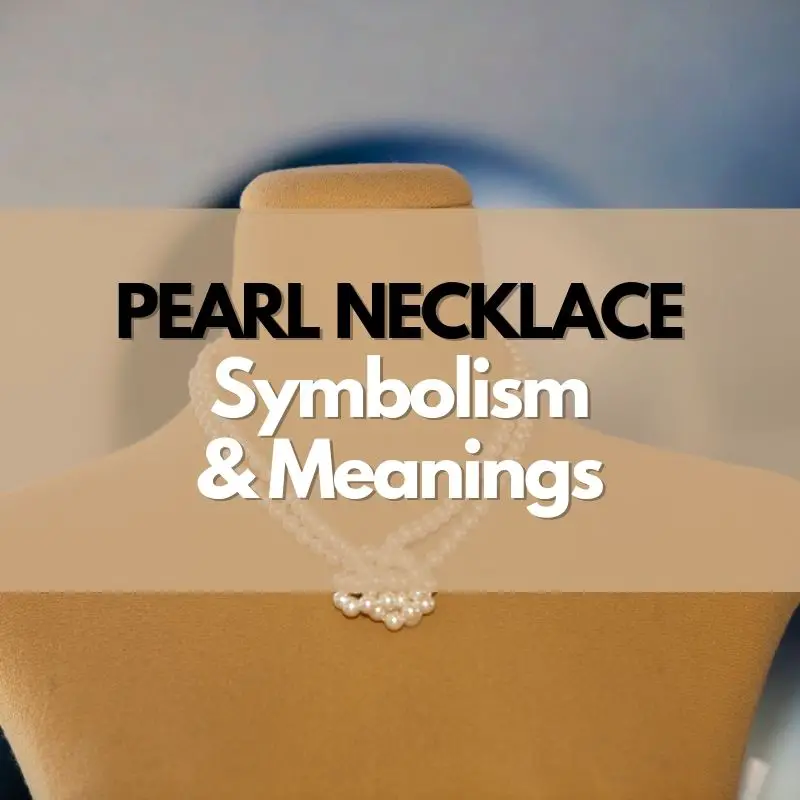The pearl necklace. A seemingly simple string of lustrous orbs, yet it whispers volumes. More than mere adornment, it’s a cipher, a repository of symbolism that has resonated through millennia and across cultures. Forget the contemporary connotations for a moment. Let’s delve into the intricate tapestry of meanings woven around this enduring piece of jewelry.
What exactly does a pearl necklace signify? The answers are multifaceted, reflecting both the pearl’s inherent qualities and the shifting sands of societal perceptions.
I. Purity and Innocence: The Foundation of Pearl Symbolism
At its core, the pearl is inextricably linked to purity. This association stems from its creation within the oyster, a process considered virginal, untouched. It is a gem born not of the earth, but of the sea’s depths. This origin story reinforces the symbolism of innocence, often associated with brides on their wedding day. The creamy white hue of many pearls further solidifies this connection, echoing bridal gowns and traditional symbols of unblemished virtue. Consider the cultural significance of white in various societies; the pearl necklace, in this context, becomes a tangible representation of untainted grace.
II. Wisdom and Experience: A Paradoxical Juxtaposition
Paradoxically, while pearls represent innocence, they also embody wisdom acquired through experience. The pearl’s formation is a testament to resilience. An irritant, a grain of sand, finds its way into the oyster. Instead of succumbing to the discomfort, the oyster diligently coats the intruder with layer upon layer of nacre, transforming adversity into beauty. This alchemical process resonates with the human experience. Challenges and hardships, though initially unwelcome, can ultimately refine us, making us wiser and more resilient. A pearl necklace, therefore, can be a subtle acknowledgement of life’s trials and the wisdom gained from navigating them.
III. Elegance and Sophistication: The Quintessential Accessory
The pearl necklace has long been associated with elegance and sophistication. Think of iconic figures like Audrey Hepburn, Grace Kelly, and Coco Chanel, all of whom frequently adorned themselves with pearls. These women embodied timeless style, and the pearl necklace became an integral part of their signature look. The smooth, iridescent surface of the pearl exudes a refined aesthetic, elevating any ensemble. Its understated beauty allows it to complement, rather than overwhelm, the wearer’s natural radiance. The single strand, in particular, speaks of classic simplicity, a testament to enduring good taste.
IV. Wealth and Status: A Tangible Sign of Affluence
Historically, pearls were a symbol of wealth and status, accessible only to the aristocracy and the very affluent. Natural pearls, especially those of significant size and luster, were exceedingly rare and, consequently, highly prized. Owning a pearl necklace signified not only refined taste but also considerable financial resources. This association with affluence persists to some extent today, although cultured pearls have made them more accessible. Nevertheless, a high-quality pearl necklace remains a statement piece, a subtle declaration of one’s discerning eye and appreciation for luxury.
V. Lunar Connection and Feminine Energy: Echoes of the Moon
Pearls are often associated with the moon and feminine energy. Their luminous glow is reminiscent of the moon’s ethereal light, and their spherical shape echoes the celestial orb. In many cultures, the moon is linked to intuition, emotions, and the cyclical nature of life. Pearls, therefore, can symbolize these qualities, representing the wearer’s connection to her inner self and her capacity for empathy and understanding. This lunar connection also reinforces the association with femininity, highlighting the pearl’s association with grace, nurturing, and emotional depth.
VI. Commemoration and Remembrance: Tokens of Love and Loss
Pearl necklaces can also serve as tokens of commemoration and remembrance. They are often gifted to mark significant milestones, such as graduations, anniversaries, or birthdays. In some families, pearl necklaces are passed down through generations, becoming cherished heirlooms that carry sentimental value. They can also serve as a tangible reminder of loved ones who have passed away, their lustrous beauty offering solace and a connection to the past. The enduring nature of pearls ensures that these memories are preserved for years to come.
VII. Modern Interpretations: Breaking the Mold
While the traditional symbolism of the pearl necklace remains relevant, contemporary interpretations are evolving. Designers are experimenting with unconventional materials, incorporating pearls into edgier designs that challenge the established norms. We are seeing pearl necklaces paired with leather, denim, and other unexpected textures, creating a more modern and individualistic aesthetic. This shift reflects a broader trend towards self-expression and a rejection of rigid rules. The pearl necklace, once confined to formal occasions, is now being embraced as a versatile accessory that can be worn in a variety of settings.
In conclusion, the pearl necklace is far more than a decorative object. It is a multifaceted symbol that embodies purity, wisdom, elegance, wealth, and feminine energy. Its enduring appeal lies in its ability to evoke a range of emotions and associations, making it a truly timeless piece of jewelry. Understanding the rich tapestry of meanings woven around the pearl necklace allows us to appreciate its significance on a deeper level, recognizing it not just as an accessory, but as a potent symbol of beauty, resilience, and enduring grace.









Leave a Comment